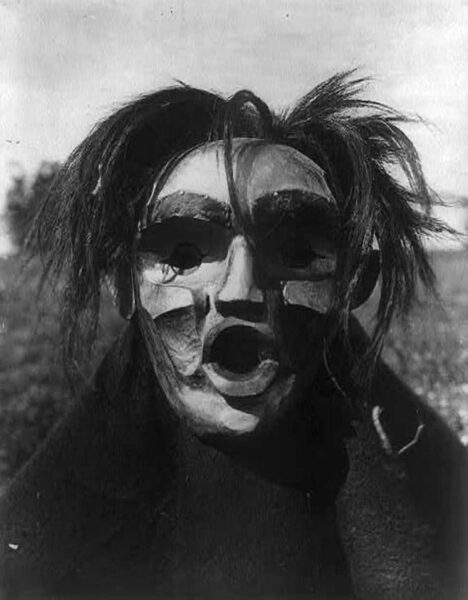Edward S. Curtis, the renowned American photographer, left an indelible mark on history with his extensive documentation of Native American cultures. Among his many compelling works is a striking 1914 photograph titled “Tsunukwalahl, Qagyuhl — Person wearing Mask of Tsunukwalahl, a mythical being, used during the Winter Dance.” Let’s delve deeper into this captivating image and its significance within Kwakwaka’wakw tradition.
The Kwakwaka’wakw people, also known as the Kwakiutl, are Indigenous inhabitants of the Pacific Northwest Coast. Most of them reside in British Columbia on northern Vancouver Island and the adjoining mainland, as well as on islands around Johnstone Strait and Queen Charlotte Strait. Their rich cultural heritage includes intricate ceremonial dress and masks, which were captured in photographs by Curtis between 1914-19151.
Preserving Cultural Heritage
Curtis dedicated his life to preserving the traditions and ways of life of Native American tribes, recognizing the urgent need to document and share their rich cultural heritage. This photograph is part of Curtis’ monumental project, “The North American Indian,” a comprehensive visual and textual record of over eighty Native American tribes.
Winter Dance Ceremony
Central to Kwakwaka’wakw culture is the Winter Dance, a profound ceremonial event also known as the Hamat’sa or Cannibal Dance. This ritual involves storytelling, dance, and the wearing of elaborate masks representing mythological beings and ancestral spirits. Tsunukwalahl, depicted in the photograph, is one such mythical figure associated with transformation and spiritual protection.
Symbolism of the Mask
The intricately carved and painted mask worn by the individual in the photograph carries profound symbolism within Kwakwaka’wakw culture. Masks serve as conduits for storytelling and spiritual connection, embodying the essence of mythological narratives and ancestral wisdom.
Cultural Preservation and Critique
While Curtis’ work has been both praised and critiqued for its portrayal of Native American peoples, it undeniably serves as a valuable resource for preserving and understanding indigenous cultures. While some critics have pointed out Curtis’ romanticized and staged depictions, his photographs remain essential for scholars, historians, and tribal communities seeking to reclaim and revitalize their cultural heritage.
Edward S. Curtis’ photograph of the Tsunukwalahl mask offers a poignant glimpse into the rich cultural tapestry of the Kwakwaka’wakw people. Through his lens, we are transported into the heart of their traditions, ceremonies, and spiritual beliefs, reminding us of the enduring importance of preserving and honoring indigenous cultures. As we reflect on this iconic image, we must continue to support efforts to safeguard the cultural heritage of Native American communities for generations to come.

